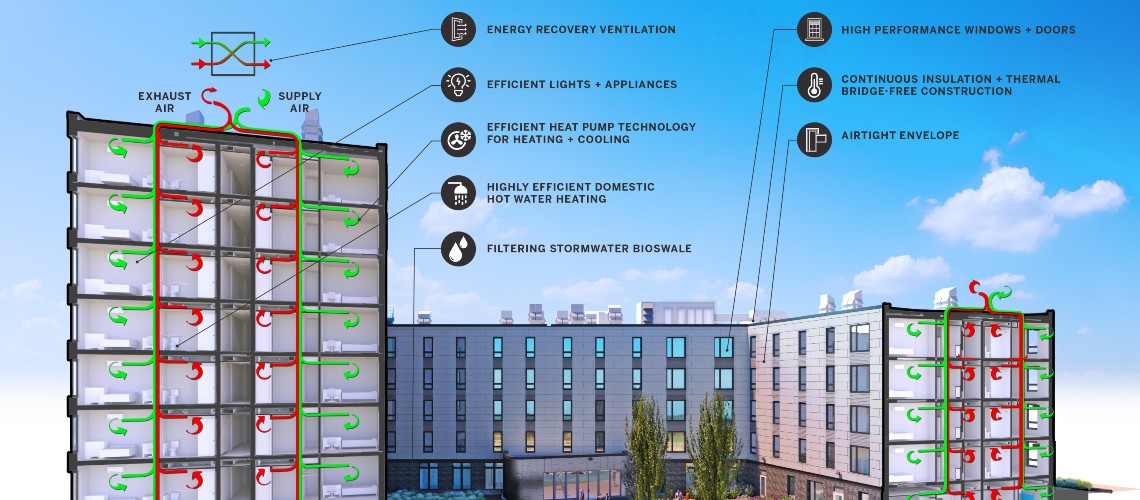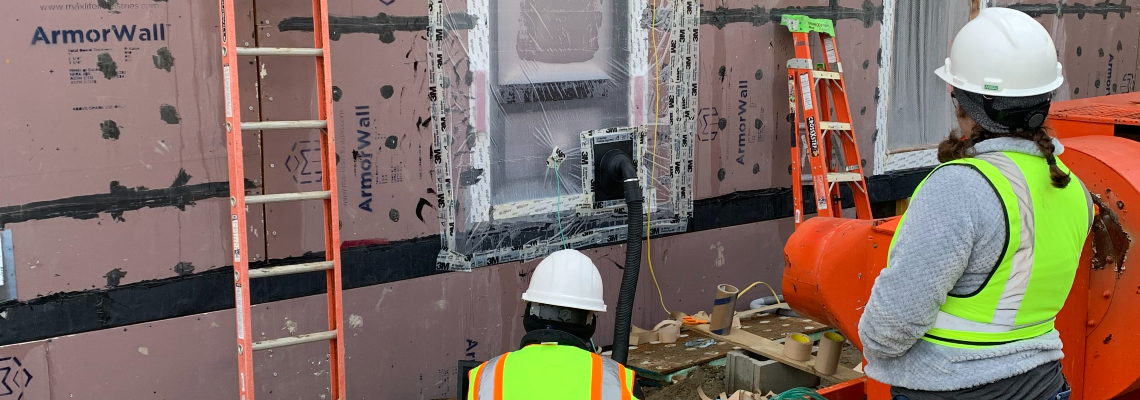Goal to be Carbon Neutral
The University of Southern Maine has a goal to be a carbon neutral University by the year 2040, under Second Nature’s Presidents’ Carbon Commitment. USM was one of the very first institutions to sign the commitment at its inception in 2007.
What is Carbon Neutrality?
Carbon Neutrality means reducing human-derived greenhouse gas emissions to zero, in order to limit the University’s impact on climate change. Reductions are needed for heating and cooling buildings, driving campus-owned vehicles, commuting to campus, traveling for business or courses, and managing downstream waste emissions. By deploying available technology and establishing eco-friendly behaviors, it is possible to reduce our emissions by 80% over a baseline of 2006. However, the last 20% is very difficult to achieve with current technologies, so the University plans to purchase ethically-sourced carbon offsets to attain the last 20%. Carbon offsets are financial instruments that reduce emissions elsewhere that you are unable to achieve onsite.
What is our Plan to Achieve Carbon Neutrality?
USM’s plan has evolved several times since 2006 to incorporate the latest barriers and opportunities. The latest plan, published in 2017 can be viewed here, and the 2020 update here. Given that climate change is a global challenge, encompassing most other environmental issues directly or indirectly, our climate action plan is our sustainability plan.
Energy Efficiency Achievements
Good carbon management follows the carbon management hierarchy, where an institution spends the most time and effort on first avoiding emissions and then reducing existing emissions before installing renewable energy. Reducing emissions is done by making the University’s buildings more energy efficient by installing better insulation, tightening envelopes, and replacing lights and mechanical equipment with more efficient models. USM has conducted millions of dollars in efficiency projects across its three campuses over the past two decades, including a recent project to completely overhaul the efficiency of its biggest building, Bailey Hall, and a residence Hall, Anderson. These projects serves as examples for the next phases, which will eventually incorporate all buildings at USM.
Renewable Energy
USM has three solar systems across the Gorham and Portland campuses, helping to offset electricity purchased on the grid. In addition, Abromson and Wishcamper buildings are heated and cooled by geothermal heat pumps. Air-to-air heat pumps are also being installed on campus in new buildings.

Green Buildings
The Master Planning Committee of 2019 adopted the Office of Sustainability’s Strategic Sustainability Plan, and set a high bar for every new building on campus to be a green building. The new residence hall on the Portland campus is on track to become the second largest Passive House-certified University building in the United States and the seventh largest Passive House building of any type in the country. Passive House is an aggressive green building standard that will result in the building using less than 50% of the energy of a typical building built to code, as well as having very high indoor air quality for the residents. It will be heated and cooled by advanced air-to-air heat pumps, providing a continuous fresh supply of air.
The new Career & Student Success Center will be LEED Certified (Leadership in Energy & Environmental Design), a standard which encompasses energy efficiency, water efficiency, recycled materials, local materials and high indoor air quality. What’s most unique about this building from an environmental perspective is its heavy use of mass timber (both CLT and Glulam) as substitutes for some of the steel and concrete applications in the building. Mass timber has significantly less embodied carbon than steel or concrete, while providing comparable strength.
The new Center for the Arts is also aiming for LEED certification and will feature a range of wood applications.
In addition to these new buildings, USM already has seven LEED buildings with some on all three campuses.


